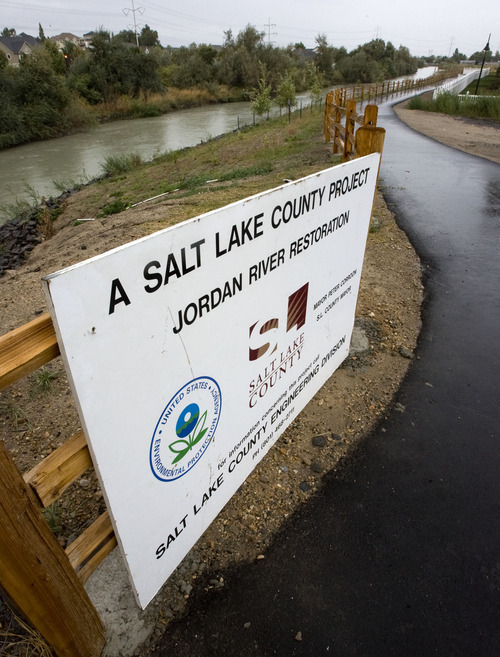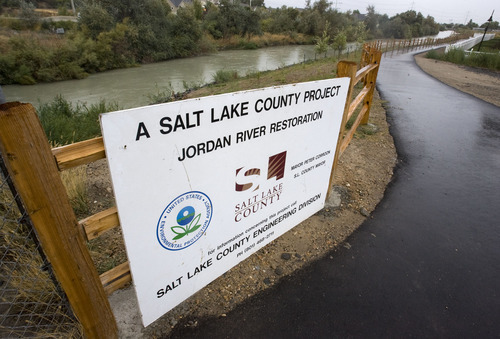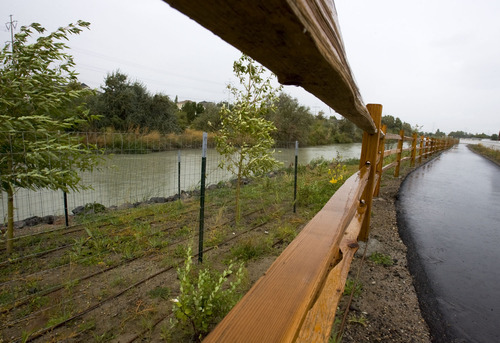This is an archived article that was published on sltrib.com in 2011, and information in the article may be outdated. It is provided only for personal research purposes and may not be reprinted.
Midvale • These days, a main concern with the stretch of Jordan River running through this city involves beavers coming out of the thickets to munch on newly planted trees along the bank.
Not bad for an area that was a federal Superfund site, covered with toxic waste from smelters that dominated Midvale's skyline for much of the first half of the 20th century.
But where dense black slag once covered the ground up to the river's east edge there are now apartments, a Jordan River Parkway trail, a stabilized stream bank and those thin-trunked trees, now surrounded by wire fences to keep the beavers at bay.
"This was a wasteland at one time, but now there is housing next to a beautiful linear park … with access for all kinds of recreation," Midvale Mayor JoAnn Seghini said Wednesday, noting that two bridges will be added soon so people can cross the river. "This will be a useful amenity for all who live here, work here and visit here."
The $1.1 million project to restore the river's east bank between 6400 South and 7800 South was a joint effort involving the city, Salt Lake County, the Utah Department of Environmental Quality, the U.S. Environmental Protection Agency and the nonprofit group Citizens for a Safe Future for Midvale.
County Mayor Peter Corroon, whose administration was primarily involved in flood control and water-quality aspects of the cleanup, surveyed the riparian habitat and geese flying overhead and lauded the "amazing accomplishment."
"The Jordan River has been a great asset, and for many years was an abused asset. We wanted to bring it back," he said of the three-year restoration project. "The riverbanks have been stabilized and revegetated, creating vital habit for animal and plant life — as well as improving water quality. It's in the best interests for all of us that this [river] is as clean and safe as possible. … If people use the river, they will respect the river."
Funding for the work came largely from the EPA, which sent several officials from Denver for Wednesday's news conference touting the effort.
"The riparian corridor is the last piece of the Midvale Superfund Slag Site cleanup" that began in 1991, said EPA spokeswoman Jennifer Chergo. "It will ensure that any heavy metal [remaining] from the slag site doesn't end up in the river."









